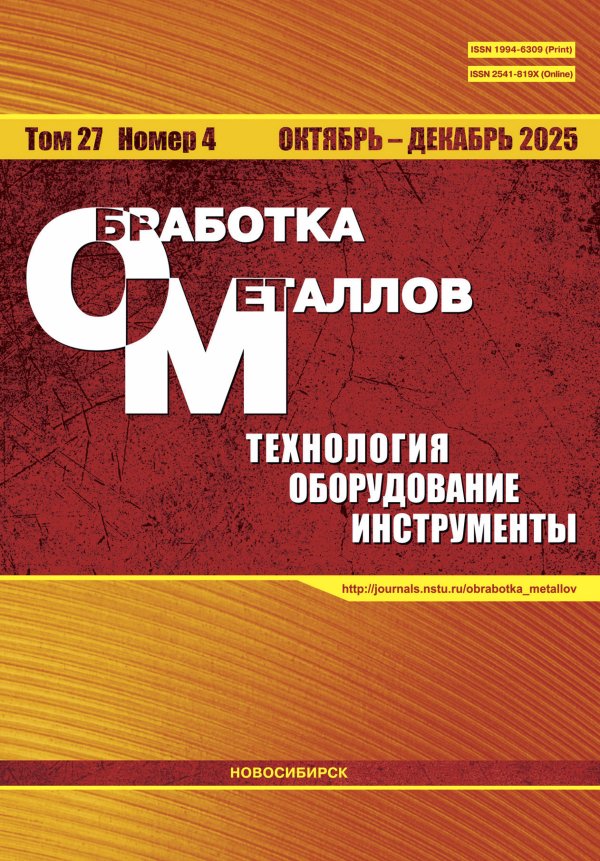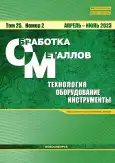Структура и свойства низкоуглеродистой стали после плазменной наплавки борсодержащей обмазки
- Авторы: Балановский А.Е.1, Нгуен В.В.1, Астафьева Н.А.1, Гусев Р.Ю.1
-
Учреждения:
- Выпуск: Том 25, № 2 (2023)
- Страницы: 93-103
- Раздел: МАТЕРИАЛОВЕДЕНИЕ
- URL: https://bakhtiniada.ru/1994-6309/article/view/301445
- DOI: https://doi.org/10.17212/1994-6309-2023-25.2-93-103
- ID: 301445
Цитировать
Аннотация
Ключевые слова
Об авторах
А. Е. Балановский
Email: fuco.64@mail.ru
канд. техн. наук, доцент, Иркутский национальный исследовательский технический университет, ул. Лермонтова, 83, г. Иркутск, 664074, Россия, fuco.64@mail.ru
В. В. Нгуен
Email: nguyenvanvinh190596@gmail.com
Иркутский национальный исследовательский технический университет, ул. Лермонтова, 83, г. Иркутск, 664074, Россия, nguyenvanvinh190596@gmail.com
Н. А. Астафьева
Email: anstella@mail.ru
канд. техн. наук, доцент, Иркутский национальный исследовательский технический университет, ул. Лермонтова, 83, г. Иркутск, 664074, Россия, anstella@mail.ru
Р. Ю. Гусев
Email: deltadota_99@mail.ru
Иркутский национальный исследовательский технический университет, ул. Лермонтова, 83, г. Иркутск, 664074, Россия, deltadota_99@mail.ru
Список литературы
- Ворошнин Л.Г., Менделеева О.Л., Сметкин В.А. Теория и технология химико-термической обработки. – М.: Новое знание, 2010. – 304 с. – ISBN 978-5-94735-149-1.
- Повышение электрической прочности ускоряющего зазора в источнике электронов с плазменным катодом / В.И. Шин, П.В. Москвин, М.С. Воробьев, В.Н. Девятков, С.Ю. Дорошкевич, Н.Н. Коваль // Приборы и техника эксперимента. – 2021. – № 2. – С. 69–75. – doi: 10.31857/S0032816221020191.
- Эволюция структуры поверхностного слоя стали, подвергнутой электронно-ионно-плазменным методам обработки / под ред. Н.Н. Коваля, Ю.Ф. Иванова. – Томск: Изд-во НТЛ, 2016. – 298 с. – ISBN 978-5-89503-577-1.
- Гуляшинов П.А., Мишигдоржийн У.Л., Улаханов Н.С. Влияние механоактивации порошковой смеси на структуру и свойства бороалитированных малоуглеродистых сталей // Обработка металлов (технология, оборудование, инструменты). – 2020. – Т. 22, № 4. – С. 151–162. – doi: 10.17212/1994-6309-2020-22.4-151-162.
- Yan P.X., Su Y.C. Metal surface modification by B-C-nitriding in a two-temperature-stage process // Materials Chemistry and Physics. – 1995. – Vol. 39, iss. 4. – P. 304–308. – doi: 10.1016/0254-0584(94)01444-L.
- Structural and strength characterization of steels subjected to bonding thermochemical process / E. Meléndez, I. Campos, E. Rocha, M.A. Barrón // Materials Science and Engineering: A. – 1997. – Vol. 234–236. – P. 900–903. – doi: 10.1016/S0921-5093(97)00389-4.
- Bindal C., Üçisik A.H. Characterization of borides formed on impurity-controlled chromium-based low alloy steels // Surface and Coatings Technology. – 1999. – Vol. 122, iss. 2–3. – P. 208–213. – doi: 10.1016/S0257-8972(99)00294-7.
- Ворошнин Л.Г. Борирование промышленных сталей и чугунов: справочное пособие. – Минск: Беларусь, 1981. – 205 с.
- Lin L., Han K. Optimization of surface properties by flame spray coating and boriding // Surface and Coatings Technology. – 1998. – Vol. 106, iss. 2–3. – P. 100–105. – doi: 10.1016/S0257-8972(98)00501-5.
- Kim H.-J., Grossi S., Kweon Y.-G. Wear performance of metamorphic alloy coatings // Wear. – 1999. – Vol. 232, iss. 1. – P. 51–60. – doi: 10.1016/S0043-1648(99)00160-X.
- Eroglu M. Boride coatings on steel using shielded metal arc welding electrode: Microstructure and hardness // Surface and Coatings Technology. – 2009. – Vol. 203, iss. 16. – P. 2229–2235. – doi: 10.1016/j.surfcoat.2009.02.010.
- Bourithis L., Papadimitriou G. Boriding a plain carbon steel with the plasma transferred arc process using boron and chromium diboride powders: microstructure and wear properties // Materials Letters. – 2003. – Vol. 57, iss. 12. – P. 1835–1839. – doi: 10.1016/S0167-577X(02)01077-7.
- Sizov I.G., Smirnyagina N.N., Semenov A.P. The structure and properties of boride layers obtained as a result of electron-beam chemical-thermal treatment // Metal Science and Heat Treatment. – 2001. – Vol. 11. – P. 45–46.
- Characteristics and abrasive wear resistance of plasma alloyed layers based on tin bronze and chromium carbide / A.E. Balanovskiy, Nguyen Van Trieu, Nguyen Van Vinh, N.A. Astafieva // Tribology in Industry. – 2022. – Vol. 44 (3). – P. 518–527. – doi: 10.24874/ti.1274.03.22.06.
- Kulka M., Pertek A. Microstructure and properties of borocarburized 15CrNi6 steel after laser surface modification // Applied Surface Science. – 2004. – Vol. 236, iss. 1–4. – P. 98–105. – doi: 10.1016/j.apsusc.2004.04.005.
- Glozman A., Bamberger M. Phase transitions and microstructure of a laser-induced steel surface alloying // Metallurgical and materials transactions. A. – 1997. – Vol. 28. – P. 1699–1703. – doi: 10.1007/s11661-997-0261-9.
- Laser surface modification of low carbon borided steels / P. Gopalakrishnan, P. Shankar, R.V. Subba Rao, M. Sundar, S.S. Ramakrishnan // Scripta Materialia. – 2001. – Vol. 44, iss. 5. – P. 707–712. – doi: 10.1016/S1359-6462(00)00674-6.
- Tayal M., Mukherjee K. Localized boriding of low-carbon steel using a Nd:YAG laser // Journal of Materials Science. – 1994. – Vol. 29, iss. 21. – P. 5699–5702. – doi: 10.1007/BF00349967.
- Surface modification of mild steel with Boron Carbide reinforcement by electron beam melting / M. Iqbal, I. Shaukat, A. Mahmood, K. Abbas, M.A. Haq // Vacuum. – 2010. – Vol. 85, iss. 1. – P. 45–47. – doi: 10.1016/j.vacuum.2010.03.009.
- Bourithis L., Papaefthymiou S., Papadimitriou G.D. Plasma transferred arc boriding of a low carbon steel: microstructure and wear properties // Applied Surface Science. – 2002. – Vol. 200. – P. 203–218. – doi: 10.1016/S0169-4332(02)00901-7.
Дополнительные файлы







